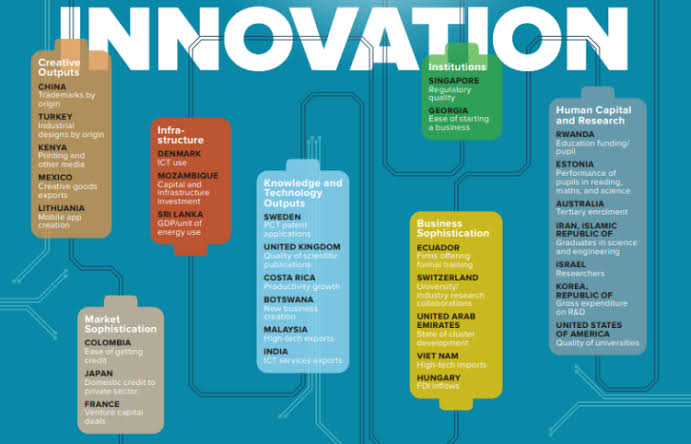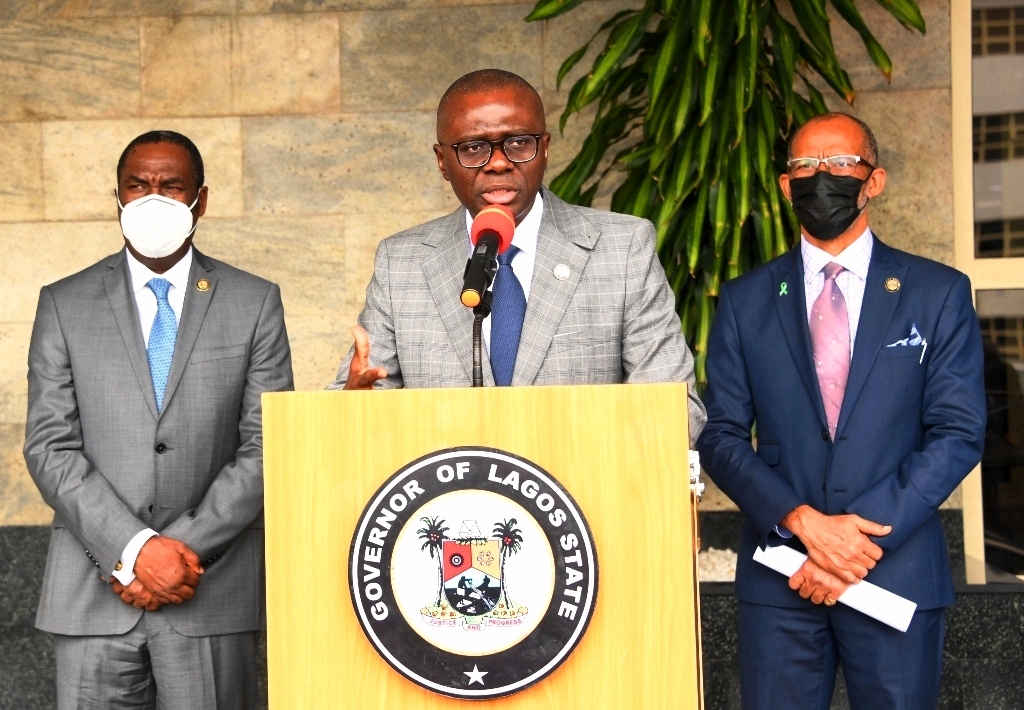
Shalom Dickson
“Sub-Saharan Africa contributes to less than 1% of the world’s entire research output.” What is your reaction to this fact? Yes, it is a fact, according to data from sources like the World Bank and Elsevier. Worse still, Nigeria, the highest shareholder in Africa’s 17% of the global population, accounts for a negligible proportion of the continent’s research generation. We can group the possible reactions to this situation into rough categories like “what?! That is unacceptable!”, “I’m not sure how to feel about that,” and “There are more important things to worry about!”. I hope that at the end of this reading, the indifferent majority would want to distance themselves by all means from the unconcerned group, so that most people would not only be embarrassed by this statistic but recognize their active role in solving the problem. We will identify the link between intellectual productivity and socioeconomic development and then work our way towards a precise solution that tells us what we must do next. There is hardly a more appropriate theme to follow this introduction than the Biblical extract:
“The tribe of Issachar supplied 200 leaders, along with all of their relatives under their command. They kept up-to-date in their understanding of the times and knew what Israel should do.” – 1 Chronicles 12:32 (International Standard Version).
Embracing the Knowledge Economy
A prominent conception of today’s global economy is the knowledge economy. It refers to a practical definition of knowledge that includes information or science and skills or talent, translating to innovation and advancement. In this system, patents, scientific understanding, and highly specialized skills are the drivers of progress. This system differs from the industrial economy in which growth depends on natural resources and the means of production. A coherent narrative for the knowledge economic game can be summarized as follows: the greater the quality of accessible information, the higher the proportion of highly skilled individuals, and this results in superior quality and quantity of economically relevant innovations. In favor of this economic theory, there exists empirical evidence, from which we find a clear correlation between knowledge output, innovation, and national wealth.
READ ALSO: Grazing Routes: FG Only Has Control Over Lands In FCT – Falana
The Global Innovation Index ranks countries according to several indicators of innovation, including business sophistication, education, and political climate. The countries that have consistently been in the top 10 of the Index from 2014 to 2019 are Switzerland, the United Kingdom, Sweden, Finland, Netherlands, the United States of America, Singapore, and Denmark. Of these countries, six are listed frequently among the top 10 national research publications per capita, and all eight are among the top 21 nations with the most scientist per capita in a 2018 chart from Statistica. Furthermore, 7 of them rank among the top 20 countries with the highest standard of living (GDP per person) per The Economist. The general trends in the global economy show that top economic performers make up over 55% of research output in science and engineering, middle-income countries produce over 30%, and low-income countries account for less than 10%.

There is a possibility—one reader could argue—that perhaps the wealthier countries, having attained their wealth whatever way, merely happen to have more resources to spend on ‘luxury’ such as research. But one can dispel this by combining two perspectives. Firstly, countries such as Nigeria and Venezuela that traditionally created wealth predominantly from the exportation of oil, which is a model of income which is antithetical to the knowledge economy, have shown a comparative decline in research output over the years. The acquisition of wealth is not the necessary motivation for scientific exploration. On the other hand, China, as a prime example of a country that has adopted a knowledge-driven economic framework, has enjoyed tremendous prosperity over the years. It advanced from the 10th to the 2nd largest economy in the world in just 30 years; with the number of research articles published (not without some quality concerns) rising from less than 5,000 yearly to more than 100,000 per year in the same period! The message is clear: grow books or go broke.
Nigeria has demonstrated the desire to “diversify” its economy. Some of its efforts so far have involved direct interventions such as investment in agriculture, private businesses, and infrastructure. These interventions target the high-level layer of development, relying on often borrowed established knowledge. It is as though we are attempting to catch up with the industrial economy, which lies in the past. But since today’s leading industries are knowledge-driven, we must aim to establish a foundation of information and skills, or else we are doomed to fare no better than Achilles, who will never catch-up with the tortoise. In the knowledge economic game, developmental structures not rooted in a foundation of science and information are analogous to attempts at erecting skyscrapers on a frozen lake. Such can only go so high without cracking the base, and in the presence of sufficient heat, the ice will melt, and a collapse is inevitable. We must develop a sustainable, self-sufficient knowledge generation mechanism.
Engineering Transformation Spurts
We can categorize transformations into (1) evolutions, the gradual, and (2) revolutions, the radical. An effective social transformation plan should comprise of both strategies. A general intervention strategy, tending to the evolutionary requirements of knowledge-driven transformation, is the improvement of public education. A summary of what I consider an optimal game plan involves securing two extremes, which are (1) Early Learning, with a focus on literacy, and (2) Advanced Learning, with a focus on knowledge creation. In addition, the plan requires that a pipeline connects both layers in the form of a well-funded special-education program to ensure that the most talented individuals in selected fields make it from start to finish. For the revolutionary requirements of the knowledge-driven economy, a more offensive strategy is required, which involves short-to-mid-term actions that lead to productivity spurts in the advancement of knowledge.
The Manhattan Project, the US-based atomic weapons research venture set up to beat the opposition in World War II, was like an intellectual beehive. It housed some of the world’s brightest physicists from America and Europe, in a time when the brightest minds in the world were notably physicists from America and Europe. In turn, they harnessed the once-elusive atomic energy within a few years. Government-funded military interest in cryptography also attracted the efforts of the likes of Claude Shannon in the US – the founder of information theory, and Alan Turing in the UK, one of the pioneers of computation theory. Years later, the US would set forth on an ambitious journey during the space race, to “put a man on the moon” within the decade! America’s best, once again, would be called upon, this time, to NASA.
Many who oppose a space program in Nigeria do so because they consider a luxurious, far-fetched goal. Others, in not too dissimilar spirits, consider it an excuse for “corruption.” Just about anything can subject to dismissal under the pretext of the latter, so it would suffice for us to treat the former, which is a much more meaningful criticism. Pointing back to the Western examples, it may not be conspicuous to one, from the success stories, what level of social cooperation was required, even in cases where the projects were “classified.” In the moon-landing case, NASA reports that no fewer than 400,000 Americans were directly involved in the Apollo project. Also, about 500,000 Americans are said to have contributed to the Manhattan project, including thousands of scientists. A perceptive perspective will further recognize that the teachers, the institutions, the families, and the religious organizations that educated and supported the primary team members are essential contributors to the projects. In short, it took a nation where all those things worked to land on the moon! A space program, or any lofty ambition, for Nigeria, would serve as a Big Goal, towards which we can dream, for the sake of which we can unite, and in whose name we can dare to explore the boundaries of knowledge. This goal sets a challenge for our nation’s best, which will cause a ripple effect across the board, encouraging the improvement of various aspects of society.
The 20th century saw an unprecedented level of progress in scientific discovery, leading to incredible improvements in technology, advancements in biology and chemistry, and paradigmatic establishments in the foundation of modern physics. Institutions played a significant role in this acceleration of intellectual progress. Universities were knowledge hotspots, attracting the brightest minds of the era, as the participants benefit from the spontaneous collision of brilliance. Our universities must recognize their role in the realization of the knowledge economy, being the nuclear core of the knowledge-generation mechanism and not merely a maturation channel for the mass-expulsion of job hunters. They will achieve this by prioritizing the fundamental development of the individual and social understanding in strategically selected fields of study.
READ ALSO: Redirect N4.8bn Social Media Monitoring Budget To Doctors’ Pay, SERAP Urges Buhari
In the commercial arena, technology and entrepreneurship hubs—the most iconic being Silicon Valley—have produced some of the greatest wonders of the internet and the stock market by connecting skilled individuals with financial capital at an incredible rate. Nigeria has made commendable efforts in the direction of establishing a functional technology entrepreneurship startup ecosystem, especially in Lagos. But a notable missing piece is the foundation of knowledge upon which tech entrepreneurs can develop socioeconomic solutions. The hubs must prioritize partnerships with universities to spur economically valuable scientific research, which is—in fact—potentially all scientific research. In the absence of such partnership opportunities, the hubs must primarily identify and function as research institutes, operating based on data-driven decisions. As in the analogy of the lake, the absence of solid ground excludes one from setting deep exploratory foundations that, unsurprisingly, yields high accomplishment.
The Effect of Talent Configuration
“The average IQ of Nigerians is 84.” The two notable features of this ‘fact’ are it is (1) significant and (2) misleading. I address both below:
At the heart of the knowledge economy is human resources. Numerous studies have shown that, beyond academic qualifications, there is a strong positive correlation between IQ, the Intelligence Quotient, and job performance, especially in technical and cognitively demanding areas such as STEM (science, technology, engineering, and mathematics) fields. The truth behind the fact is even more striking; the modern basis for IQ tests is that they measure a general ability factor, which prevails in all human activities. Although not with perfect accuracy, this is the scientifically valid model of human intelligence. A more intelligent group can generate a disproportionately greater quantity of knowledge than a significantly less intelligent group. If the difference is large enough, there may be qualitative attributes to the intellectual output of the former group that the latter cannot replicate even if given an infinite amount of time. So, it is of significance that there is such a statement about Nigeria’s average IQ because the fact of the claim has implications for its socioeconomic possibilities.
The statement, however, is misleading. The average (mean) IQ globally is set at 100. An IQ of 84 is 1.14 standard deviations—i.e., classes of the measure—below the global average, and this is a significant difference. IQ follows a normal distribution: ideally, the majority of the population cluster around the mean, a small proportion are above average, and an even smaller fraction is at the high extreme. Conversely, some are below average, while a small proportion is at the extreme negative. The lower the average for a given population, the lesser its representation in the higher extreme compared to others. In other words, if most members of a group are below average intelligence, very few will be of above-average intelligence, and there would be hardly any found beyond a point. While we may consider that the socioeconomic state of the average Nigerian compared to dwellers of developed nations justifies the supposed gap in the average IQs, Nigeria’s supply of top talent is beyond the statistical expectation if the average is as low as advertised. To illustrate, Nigerians, considered as one ethnic group, are the most educated group in the US on average, and they represent a majority of black physicians. In the UK, Nigerians, taken as one ethnic group, are at the top three of the highest performing ethnic groups academically. Considering the Igbo group alone, they place number 1 in academic performance, above Asians. Meanwhile, Nigeria maintains an unforgivable relationship with key challenges such as high rates of illiteracy, diseases, and malnutrition. These are well-known to contribute to low national average IQs.
Given the unusual case of Nigeria’s talent distribution, it should be evident that the problem, beyond what kind of people we have, is mostly about their positioning, a phenomenon I refer to as “talent configuration.” To illustrate the power of configuration, that is, that the position of elements within a system can affect the overall properties of the system, we should look no further than the case of carbon. Diamond, the hardest and one of the most expensive materials on Earth, consists solely of carbon atoms. The same carbon atoms, arranged differently, yield graphite, one of the softest solids on Earth, not of comparable value. Take the very graphite and make it into a flat sheet with the carbon atoms connected in a 2-dimensional netlike structure, and the result is graphene, which is the strongest, thinnest material yet – so strong that a single sheet can bear the weight of an elephant balanced on a pencil! To optimize our nation for knowledge productivity, we need to invest in positioning the right people in the right place at the right time.
Next Step: Map Out Nigeria’s Brain
Where are all our geniuses? By “geniuses,” I refer to the achievers of groundbreaking, once-in-a-generation feats in the advancement of knowledge… Like the phenomenal Jay-Jay Okocha, but for physics, chemistry, engineering, biomedicine, economics, art, and philosophy. Our genius will not emerge like a thief in the night. If Nigeria produces Nobel Prize, Turing Award, or Fields Medal-rate scholar in the next ten years, the individual should be giving off hints by now in their research pursuits. Where is he or she, and what are they doing right now? Where are the 1,000 other top researchers from which this one gets selected? Identifying our cognitive top 0.01% should be a prime goal of our talent configuration program. It makes economic sense to prioritize our investment in the individuals who possess the capacity for top performance in any area. This priority is not an unfair act of discrimination; top talent can, in principle, stem from anywhere and any home, and when we have our best at the frontline, everyone benefits from the progress.
Another clear target is age. Modern psychology considers two forms of intelligence – fluid intelligence and crystallized intelligence. Fluid intelligence is one’s ability to solve problems irrespective of their prior knowledge, while the latter is governed by one’s mastery of conventional knowledge. Fluid intelligence increases with development until around age 17, stabilizes, and begins to decrease soon after the mid-20s; on the other hand, crystallized intelligence would advance into one’s 50s, as they continue to acquire knowledge. For intellectual output, we can imagine that there should be an optimal period for peak performance, where one’s high fluid intelligence matches a sufficiently high crystallized one. A reasonably generous (unofficial) estimate for this is between 25 – 35. The unwritten, empirically sound rule for high achievement is, thus, to start early and dive deeply. Indeed, one of the highlights in talent configuration observed in developed nations is the mechanism for exploiting advanced skills in the under-30 population. Within this context, the goal is to engineer youthful capacity by supercharging their crystallized intelligence as much as possible before they turn 20. Extraordinary performance requires extreme grooming of exceptional talent.
READ ALSO: Opinion: Journalism In A Rapidly-Changing World
We have to employ the science of cognitive psychology in the identification and categorization of top talent to enhance the interconnectivity and productivity of Nigeria’s critical population; We have to Map Out Nigeria’s Brain.
The general goal of talent optimization is to foster the intellectual culture, which fuels the knowledge economy, to promote the exploration of novel ideas, particularly, expanding the talk-time on crucial subjects in public discourse. The ideal state of the individual in this culture is one who (1) has identified their strength and interests, (2) has constructed a knowledge map for their learning, (3) has adopted a Big Goal, (4) is pursuing a mid-term research project, (5) shares information that increases the knowledge bank of some social system, and (6) is continually looking out for others with common interests. If you check at least 3 of these items as “done,” then you are actively contributing to Nigeria’s intellectual culture.
Okay, But Will This Work?
What makes a great solution? In this essay, we have identified, at the heart of the nation’s socioeconomic underperformance, the not-so-obvious problem of talent configuration, to which a compelling solution is to Map Out Nigeria’s Brain. How do we know that this is the real deal? Well, for the most part, we have to do it to prove it. But we can evaluate the solution by considering the general features of ‘great solutions’: Sometimes, they “feel somehow” until they get implemented. Provided they are novel even if they are logically coherent, they may be difficult to reconcile with experience. In essence, they may be counterintuitive. However, great solutions are designed such that once one has decided to go for the jump, there are feasible options for the first step. This solution is a perfect fit, and it will benefit immensely from social cooperation. We have recently experimented with some of the methods and assumptions in this writing, and the preliminary outcome suggests that it works, it will work at a massive scale, and—yes—it can work in Nigeria.
Here is what we ought to do: identify our brightest minds, bring them together, and watch the magic unfold!

